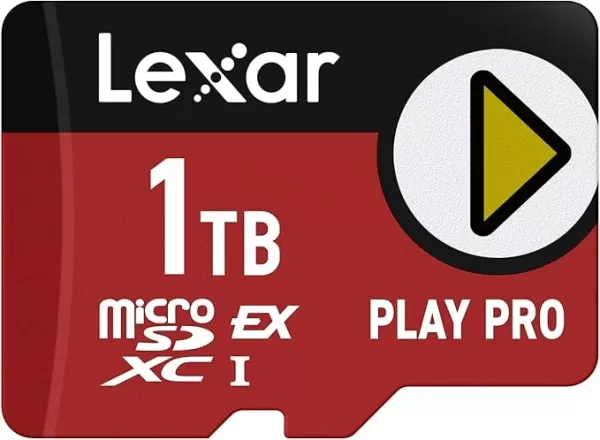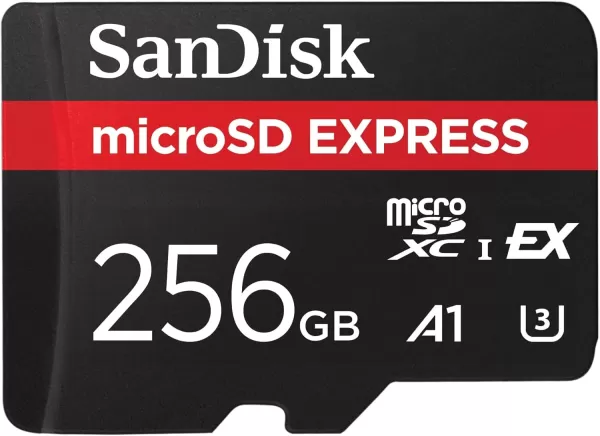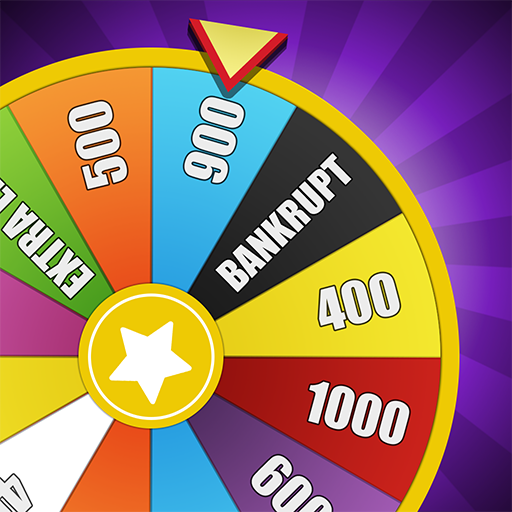Last week, Nintendo unveiled the highly anticipated Nintendo Switch 2, revealing a significant change in its storage expansion options. The new console exclusively supports MicroSD Express cards, a decision that, while inconvenient for those with existing MicroSD collections, aligns perfectly with the console's performance needs. MicroSD Express cards offer dramatically faster read/write speeds, closely matching the UFS (Universal Flash Storage) used in the Switch 2's internal storage. This compatibility ensures that games stored on these expansion cards can load as quickly as those installed internally, though it does mean users must invest in the newer, faster cards.
MicroSD vs. MicroSD Express
Over the years, MicroSD cards have evolved significantly in terms of speed. Starting with an initial speed of 12.5MB/s, which seems slow by today's standards, the technology has progressed through various speed ratings. These include SD High Speed at 25MB/s, up to SD UHS III at 312MB/s. However, a major leap occurred with the introduction of the SD Express standard five years ago, which utilized a PCIe 3.1 interface instead of the slower UHS-I. This shift to PCIe technology, akin to that used in high-performance NVMe SSDs, allows full-sized SD Express cards to achieve data transfer speeds up to 3,940MB/s. While MicroSD Express cards don't reach these top speeds, they can still perform at up to 985MB/s, significantly outpacing the fastest non-Express MicroSD cards by a factor of three.
Why Does the Switch 2 Require MicroSD Express?
Although Nintendo typically keeps its hardware decisions under wraps, the rationale behind requiring MicroSD Express cards for the Switch 2 is clear: speed. The difference in load times between games stored on traditional UHS-I MicroSD cards and MicroSD Express cards is substantial, thanks to the latter's use of the PCIe 3.1 interface. This could set a new standard for handheld gaming PCs as well. The Switch 2's internal storage has been upgraded to UFS from eMMC, and ensuring that external storage matches these speeds is crucial for maintaining performance. Early demos suggest significant improvements in load times, with reductions ranging from 35% for fast travel in games like Breath of the Wild to a threefold increase in initial load times. These enhancements may be attributed to both the faster storage and the improved CPU and GPU, which can handle data more efficiently. By requiring MicroSD Express, Nintendo ensures that future games needing faster storage won't be hindered by slower external media.
Moreover, this requirement paves the way for even faster storage solutions in the future. The current SD 8.0 Specification supports speeds up to 3,942MB/s for full-size SD Express cards, and while MicroSD Express cards aren't there yet, the potential for such speeds exists, especially if the Switch 2 can support them.
AnswerSee ResultsMicroSD Express Capacity Options
Currently, MicroSD Express cards are not widely available, but this is expected to change with the launch of the Nintendo Switch 2. Lexar offers a MicroSD Express card in capacities of 256GB, 512GB, and 1TB, with the 1TB variant priced at $199. SanDisk, another major player, currently offers a 256GB MicroSD Express card, which matches the internal storage capacity of the Switch 2. As the console hits the market, the availability of higher-capacity MicroSD Express cards is likely to increase, especially as companies like Samsung enter the fray with new memory card options.

Lexar Play Pro MicroSD Express
0See it at Amazon

SanDisk MicroSD Express 256GB
0See it at Amazon






